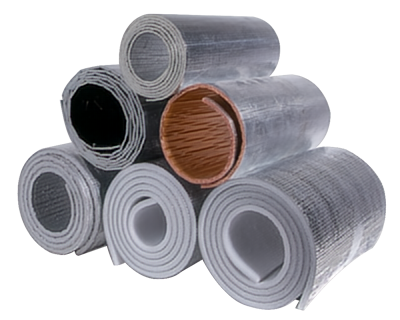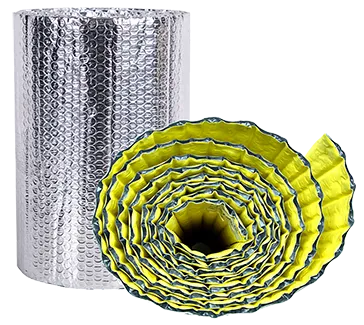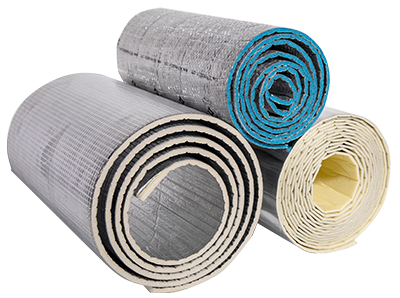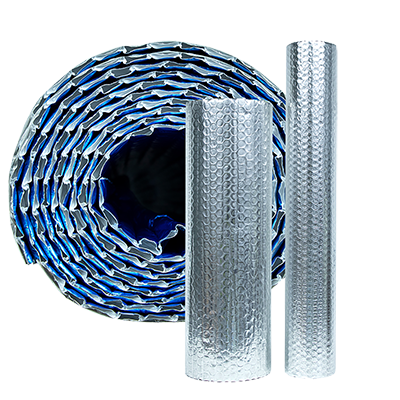 Tel: +86 188 2689 9458
Tel: +86 188 2689 9458
 Tel: +86 188 2689 9458
Tel: +86 188 2689 9458
source:Industry News release time:2024-05-17 Hits:
![]() Thermal insulation materials play a vital role in modern engineering and technology. They can effectively reduce the speed of heat transfer, thereby achieving the effects of heat preservation and energy saving in various applications. Understanding the working principles of thermal insulation materials will help us better select the types of thermal insulation materials and develop more efficient construction methods.
Thermal insulation materials play a vital role in modern engineering and technology. They can effectively reduce the speed of heat transfer, thereby achieving the effects of heat preservation and energy saving in various applications. Understanding the working principles of thermal insulation materials will help us better select the types of thermal insulation materials and develop more efficient construction methods.

The working principle of thermal insulation materials is to reduce the efficiency of the three main heat transfer modes of heat conduction, heat radiation and heat convection by using low thermal conductivity materials and pore structures, so as to achieve the purpose of slowing down heat transfer. Let's first understand the three main modes of heat transfer:
Heat Conduction
Thermal conduction is the process of heat transfer from a high-temperature object to a low-temperature object. It is essentially a heat transfer phenomenon caused by the thermal movement of microscopic particles (such as atoms, molecules, etc.) inside the object. The rate of heat conduction is significantly affected by the thermal conductivity of the material. For example: Metals transfer heat quickly due to their high thermal conductivity. In contrast, insulating materials such as wood or plastic have low thermal conductivity and therefore slow the transfer of heat.

Insulation materials usually have low thermal conductivity, which makes the ability of heat transfer inside them weak. This is mainly due to the molecular structure and composition characteristics of insulation materials. For example, polymer materials and insulating silicate materials have much lower thermal conductivity than high thermal conductivity materials such as metals. In addition, insulation materials often contain air layers, such as fiber gaps in materials such as glass fiber and rock wool, and bubbles in foam plastic materials. These structures can effectively slow down the transfer rate of heat.
Heat radiation
Thermal radiation refers to the phenomenon that an object radiates electromagnetic waves due to its temperature. It is widely present in nature and artificial environments. For example, the radiation of the sun, the radiation of flames, and the infrared radiation of objects are all thermal radiation. All objects above absolute zero can generate thermal radiation, and the higher the temperature, the greater the total energy radiated.

Thermal insulation materials often reflect most of the thermal radiation by coating their surfaces with materials with high reflectivity such as metal or special ceramics, preventing it from entering the interior of the material, thereby maintaining the stability of the internal temperature.
Heat radiation
Thermal convection refers to the process of heat transfer caused by the relative displacement of the fluid parts due to the macroscopic movement of the fluid (liquid or gas), and the mixing of hot and cold fluids. Thermal convection can be forced convection driven by external forces, or it can be natural convection caused by density changes caused by temperature differences.

Insulation materials often use porous structures that can capture and store a lot of air, reducing the possibility of heat convection by reducing air flow. At the same time, some insulation materials use layered structures to effectively hinder the occurrence of heat convection by increasing the path length of heat transfer.
In summary, the working principle of thermal insulation materials involves the delicate regulation of multiple heat transfer methods such as heat conduction, heat radiation and convection. By selecting appropriate materials and designing structures, thermal insulation materials can effectively reduce heat transfer and protect the stability of internal temperature.
https://www.toplinepackaging.com/flexible_packaging_film_roll/#99
Read recommendations:
Custom Laminated Printing Juice Bag Liquid Packaging Stand Up Plastic Water Spout Pouch
Introduce the development trend of pet food packaging.Spout pouch flexibility Factory
How to classify and differentiate composite food bags.aluminum foil bags for grilling Production
Popular recommendation
China Factory Baby Complementary Food Spout Pouch Baby Food Fruit Puree Bag With Spout Packaging Bag
Bag-In-Box
Laminated Aluminum Foil Zip Lock Bag Stand Up Pouch /Matt White Foil Pouch /Zip Lock Coffee Bag
coffee grinds pouch wholesaler
recyclable spout pouches custom
Aluminum foil bag Factory
bag in box wine sales
pouch with handle distributors
clear spout pouch custom
wine bag in box Solution
Customized milk tea packaging bag manufacturers
Compostable and Biodegradable Stand up Pouches -The Complete Guide
Packaging airbag inflation
Why are stand up pouch bags widely used?
The production process and process of vacuum packaging bags
Classification and material of packaging bags
Why does the food packaging bag have a odor and how to avoid it?aluminum foil bags for cooking maker
Introduction to packaging methods for containerized liquids
What is the difference between plastic packaging bags and paper bags
What are the inspection standards for food packaging bags?
What are the performance requirements of paper plastic composite bags?aluminum foil bag roll manufac
How to identify PE plastic bags? What are the methods?
Packed color.aluminum foil bag large wholesaler
Characteristics of various food packaging materials
How to deal with air leakage in vacuum packaging bags
The wide application of liquid packaging bags
The significance of bags in sterile boxes
How does the vacuum bag manufacturer determine the size of the bag
Matters needing attention about food nylon vacuum bag
Current Situation and Prospects of the Global Packaging Machinery Market.vacuum sealer bags for food